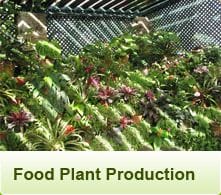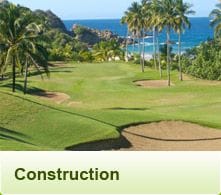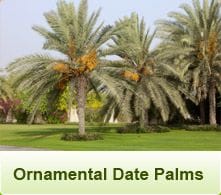Modelling the role of AustraBlend® Multi Mineral Root Zone Conditioner, applied to improve soil fertility, texture and water holding capacity.
AustraBlend Pty Ltd
AustraBlend® Pty Ltd has developed a soil conditioner specifically for marginal sandy soils offering production potential, given appropriate application rates, that will improve soil fertility, organic matter, texture, water holding and production capacity levels to create long term sustainable production units.
Most soils in Middle Eastern regions show characteristics of low CEC, organic matter, fertility and water holding capacity levels. Low CEC indicates predominantly high bulk density textured soil classes of sandy to sandy loam soil or sandy to silty loamy soils which also indicates high water penetration rates, poor water dispersion through the profile and tendency to compact very easily if cultivation practice are not adopted to counter these risks.
Because of the high bulk density levels, irrigation and cultivation practice costs are high, amelioration of these soils with the correct soil conditioners will substantially lower these costs and make these soils more sustainable units over the long term.
Application of only organic matter soil conditioners will make improvements but due to the climatic conditions and cultivation practices, these improvements are relatively short lived (6-9 months). A more sustainable practice is to apply AustraBlend® Multi Mineral Root Zone Conditioner that will give guaranteed long term benefits.
After appropriate applications of AustraBlend®, soil testing every 3 - 4 years will determine if any, and at what rates additional applications of AustraBlend®Multi Mineral Root Zone Conditioner would be needed.
According to Wikipedia data (USDA DATA) relating to soil moisture levels for different soil textures classes, the optimum field capacity level for clay loam soil is 21.5%.
Optimum soil should have 45% minerals (including sand, silt and clay), 25% water 25 % air and 5 % organic matter.
According to ICBA ( International Centre for Biosaline Agriculture, Dubai) report of experiment March April 2011 (Report attached), AustraBlend® application rate of 5% by volume gives the desired 21% field capacity level.
The time required to drain a field at optimum soil conditioning level from flooded to field capacity level will take 3 times longer compared to the sandy sandy loam soils.
We at AustraBlend® believe that with existing data available, it is possible to ameliorate sandy soils economically with AustraBlend®Multi Mineral Soil Conditioner.
Calculation Table:
Assumptions:
Applying AustraBlend® @ 5% by volume to 0.5 m soil depth: 10m x100m x 0.5m = 5000 m x 5% AustraBlend® requires 250 metric ton per hectare.
AustraBlend® cost is AU $650.00/metric ton, and may remain active in the soil at least 10 years with correct soil cultivation practices.
AustraBlend® cost of 250 metric ton x $650 = $162,500/hectare
Cost of desalinated water = $1/cubic meter. (Assuming parity with Australian dollar).
Average MENA soil bulk density varies between 1.4 1.8, we use 1.6 soil bulk density for this calculation.
Average soil bulk density of 1.6 = 1600 kg x 25% target moisture level = 400 litres of water per cubic meter required to achieve field capacity level.
Irrigation cost @ $0.400 per liter x 5000 M = $2,000 per hectare.
According to Wikipedia, field capacity of untreated sandy soil will last only 2 days thus annually 180 waterings are required.
Annual cost $2,000 x 3 (to bring to treated clay loam equivalent) x 180 = $1,080,000 per ha.
Clay loam soil as per Wikipedia has a bulk density of 1.2, thus 1.2 x 1000 kg = 1200 kg.
1200 kg x 25% target moisture level = 300 liters of water per cubic meter required to achieve field capacity level.
Irrigation cost @ $0.300 per liter x 5000 M = $1,500 per hectare.
Wikipedia data states field capacity of clay loam soils will last 6 days, ie, three times of the sandy soil (untreated soil) thus 60 waterings is needed (USDA DATA).
Annual cost $1,500 x 60 = $90,000 per ha.
Conclusion:
AustraBlend® cost per hectare $162 500
Irrigation water $ 90 000
Total cost per hectare per annum $252,000
Massive savings are to be had without taking into account that AustraBlend® will not be replenished annually.
$828,000 per hectare per annum.
Calculated as $1,080,000 - $252000 = $828,000
Notes:
Please refer to ICBA experiments March April 2011 Report describing 21%field capacity achievements with AustraBlend®Multi MIneral Root Zone Conditioner treatments @ 5% by volume.
Please refer to data for varying soil texture classes and read the comprehensive data for both MEDIUM SAND and CLAY LOAM. You will see Field Capacity measurement of 6.8 for MS measured against 21.50 for CL this translates to 55% greater efficiency of water usage per m3, one to the other.
As per Wikipedia data, an IDEAL SOIL will be comprised of 25% WATER, 45% MINERALS (Supersorb & sand), 25% AIR and 5% ORGANIC MATTER.
Bulk Density of MS is 1.6 Thus 1.6 x 1000 = 1600 kg per M, water 25% thus 1700 x .25 = 400 liters per M x 0.51 = 21.68 liters plant available per M.
Bulk Density of CL is 1.2 Thus 1.2 x 1000 = 1200 kg per M, water 25% thus 1200 x .25 = 300 liters per Mx 11.3 = 33.90 liters plant available per M.
Thus 12.22 additional liters plant available per M, an increase of 56.36% (33.9-21.68).
400 300 = 33.33% however MS must be multiplied by factor of three to reach an equivalent of CL because field capacity is maintained 2 days with MS and 6 days with treated CL.
100 liters comparatively is saved thus 10 cents per m3 multiplied by three = $ 0.300 M saved.
Hectare example at depth 50cm.
100 x 100 x .50 x 5000 x .300 = $ 1,500 per hectare.
We have not attempted to quantify the savings to fertilisation, the very much greater gains in efficiency resulting from the lessened water application nor the relative ease of maintaining efficiency in field operations.
We believe these notes, when seen against the tables will prove the unique properties offered by AustraBlend® and the massive savings to be achieved. This information, fully tested, needs to be placed before appropriate decision makers in order to establish the requisite element of urgency.
Consideration may be given to trial at application rates of 1.5, 3.0, 5.0 and 7.5%.
Please click here to download more information on Soil.






